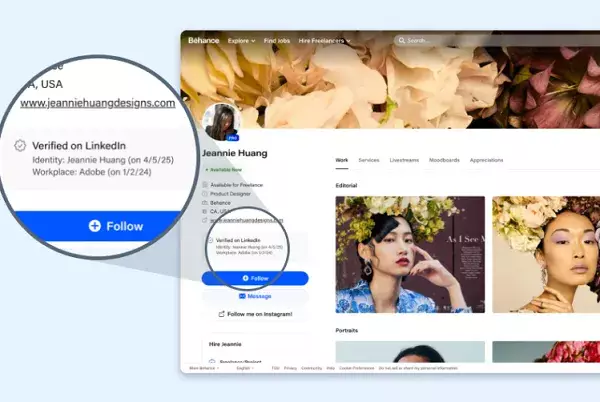In the digital age, where the lines between authentic interactions and impersonations often blur, LinkedIn is stepping up to address these challenges in an innovative way. By enabling third-party platforms to display its ID verification markers, LinkedIn is not only enhancing the integrity of professional connections but is also pushing the boundaries of what digital identification means in networking scenarios. This initiative, which originated in 2023, allows users to confirm their identity through verified channels, thus promoting a more trustworthy atmosphere for networking and collaborations.
LinkedIn’s ID verification process is revolutionary. Unlike platforms that differentiate between celebrities or paid verification and ordinary user verification, LinkedIn creates a level playing field where all users can showcase their authenticity. Users who complete this process can display a verification tick in their profile—a badge of trustworthiness that signifies genuine engagement in a world increasingly saturated with bots and fake accounts.
Collaboration with Third Parties: A Win-Win Situation
The partnership with third-party platforms, exemplified by Adobe’s integration of LinkedIn ID verification into its Content Authenticity app and Behance portfolio, showcases a strategic approach to authenticity in the creative realm. By allowing creators verified through LinkedIn to exhibit a “Verified on LinkedIn” badge, Adobe eliminates the need for its verification system while simultaneously enhancing the credibility of its community members. This kind of cross-platform collaboration is a testimony to the evolving nature of online identities—where verification marks serve not just as identifiers but as trust signals, enhancing the reputation of users across different applications.
It’s not just about making connections; it’s about making meaningful connections with an assurance that they are genuine. This move by LinkedIn paves the way for a larger ecosystem of verified users, which can greatly mitigate issues related to spam and impersonation, thereby fostering a safer environment for professionals to navigate.
A Growing Call for Accountability
There has long been a considerable push for universal verification systems in social networks to enforce accountability. Many users believe that a simple step towards identity validation can lead to a more responsible online culture. However, the debate over anonymity versus verification remains heated. While some advocate for strict ID checks to maintain order, others argue that such measures infringe upon personal privacy.
Nevertheless, initiatives like LinkedIn’s ID verification offer a viable middle ground. They show that it is indeed possible to introduce measures of accountability without compromising user privacy completely. Especially within a professional context, the willingness of LinkedIn members to publicly confirm their identities speaks volumes about the direction in which online interactions are heading. After all, in business, trust is currency; the more authentic your online persona, the more valuable your network becomes.
Future Implications for Digital Identity
As LinkedIn continues to expand its identity verification process globally, one cannot help but ponder the long-term implications of such a strategy. With over 80 million users having participated in the voluntary ID confirmation process, the platform sets a precedent for what could become a standard in various online communities. The idea of universal ID verification—backed by third-party partnerships—could be a potential template for regulators considering ways to combat misinformation and improve online safety.
Moreover, with the increasing sophistication of artificial intelligence tools capable of creating digital fakes, LinkedIn’s focus on authentication becomes not just relevant, but critical. The marriage between ID verification and Adobe’s “Content Credentials” further enhances digital ownership, providing layers of trust that consumers will increasingly demand. As businesses and professionals alike navigate an increasingly complex digital space, the assurance that one’s digital identity aligns with their real-world counterpart will become indisputable.
LinkedIn’s initiatives are more than just technological upgrades; they signify a shifting paradigm in how we perceive and assert our identities online. By harnessing third-party technologies and advocating for universal ID verification, LinkedIn is charting a course for a more trustworthy digital future—one where authenticity enhances success in the professional realm.


Leave a Reply